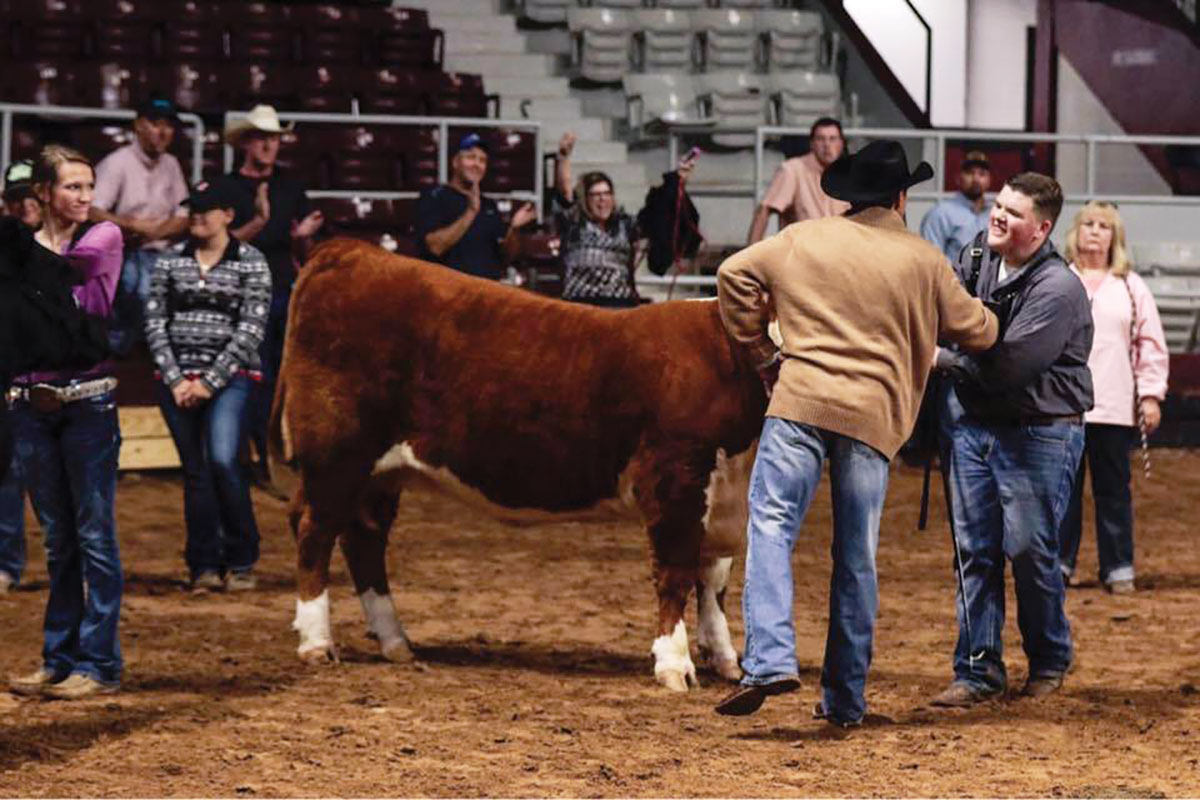 Earlene Boone’s infectious energy spills out onto her farm. She’s a 6-year breast cancer survivor and in September of this year had open-heart surgery. “This is Earlene a week after surgery,” her husband Richard said, holding up his phone with a picture of Earlene tagging a calf.
Earlene Boone’s infectious energy spills out onto her farm. She’s a 6-year breast cancer survivor and in September of this year had open-heart surgery. “This is Earlene a week after surgery,” her husband Richard said, holding up his phone with a picture of Earlene tagging a calf.
Richard still works in healthcare but Earlene retired from that sector in 2003 to spend time with her father. When he died a few months later, she inherited his farm located near Natural Dam, Ark.
The couple nearly started from scratch because the land had set idle for a few years because of her father’s poor health. They named it Mountain Fork Hereford Farm after the creek that borders the property. “It needed a lot of work, so we started by clearing all the fences. We installed the brown pipe fence,” she said as she motioned around the perimeter. I knew that if I was going to be working with cattle that weren’t used to being here, I wanted something that would hold them. The first load that we turned into the pasture right here by the house went right over that fence and over to the neighbors,” she said with a laugh.
She decided to look into raising Black Herefords because Black Baldies are so popular, but she wanted something with consistently good disposition. Her father had Herefords so she was familiar with the breed. “I wanted the demeanor of the Herefords,” she said. They purchased several purebred Herefords from local breeders but they traveled to Oklahoma looking for a new herd bull. “We came back with two, she laughed, “A black one and a red one.
“Our black bull is not homozygous black, so only about half of the calves that he throws are black,” she explained. Earlene also said that the market is good enough for the Black Herefords that they do not retain any of their black heifers. That also allows them to keep using the same bull.
Earlene manages her calving season to be short and early. “I have a controlled caving season. We start having babies in October and I am usually done by mid-December. That way we can sell at weaning in May or June.
They retain some of their bulls to sell as breeding stock. “We do sell registered Black Hereford and Red Hereford bulls, typically at 18 months to 24 months old for breeding bulls,” she said. They market through various services including the American Black Hereford Association website, Cattle Range and newspaper ads.”
One of Earlene’s momma cows made national and local news this year because they had three bull calf triplets born. To most, triplet calves would be a once in a lifetime experience. But, it’s not the first time that Earlene has seen triplets born. “Dad had a set of triplets about 30 years ago,” she said. And after nine calf crops she’s become no stranger to multiple births. “I’ve had eight sets of twins and only lost one calf. It was one of the very first set of twins,” she said. “I haven’t named them,” she said of the triplets, “I didn’t want to get too attached. I’m already attached to them, so I just call them A, B and C,” she said with a smile.
Earlene attributes her herd’s success to her maintenance policies. “I love our animals and believe in taking quality care of them, and in return, we have good stock for our buyers. I supplement with feed, mineral salt blocks year round and medicated mineral prior to calving season,” she said.
She is diligent in meeting each ones unique needs. Earlene and Richard herded one cow into the shoot and Earlene caught it in the head gate. “This cow hasn’t been giving as much milk this year. I’ve never had that problem before, but she’s an older cow. I’m giving her some shots that contain vitamins in case it is some kind of deficiency,” she explained. “I’m bottle-feeding her calf, but it is still nursing so it must be getting something,” she continued. “They all have names and individual personalities, and I enjoy bringing new calves into the world.
“My goal is to raise excellent cattle for other breeders and to watch them grow. I enjoy seeing some of our bulls and heifers that we have sold to our neighbors and see how good they look. I am very proud of our cattle,” she said.







